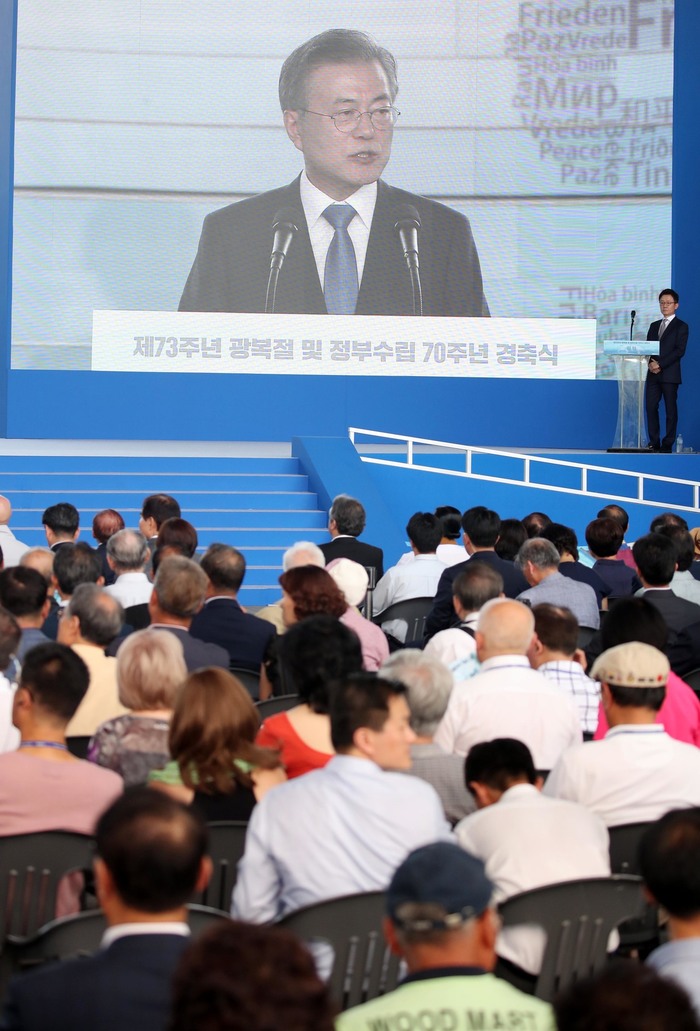 |
|
South Korean President Moon Jae-in gives a speech at a celebration of Korea’s 73rd National Liberation Day at the National Museum of Korea in Seoul on Aug. 15. (Blue House photo pool)
|
South Korean president lays out plans for when inter-Korean military tensions are reduced
The vision for a “special unification economic zones” in the Gyeonggi/Gangwon Province border region suggested by President Moon Jae-in in his National Liberation Day celebratory address on Aug. 15 is being seen as signaling his commitment to achieving the two goals of peace and economic development as military tensions are reduced between South and North Korea. Mentioning “peace and economy” in his address, President Moon said that a “special unification economic zone will be established in the border region between Gyeonggi and Gangwon Province if military tensions are reduced and peace is established.” The zone, he explained, would “create many jobs and provide an opportunity for historic advancements for the region and small businesses.” Citing figures from the Korea Institute for International Economic Policy (KIEP), he predicted the economic effects from inter-Korean economic cooperation would total “at least 170 trillion won [US$150 billion] over the next 30 years.” “As we achieve the dream of a peace economy and economic community, our economy will be able to take a new leap forward,” he said. President Moon also made reference to past advancements in the economy of Goseong in Gangwon Province due to tourism at Mt. Keumgang, as well as the “dazzling transformation” realized in the Paju area with an employment effect of 100,000 jobs at the Kaesong Industrial Complex. The remarks were his first-ever mention of establishing a special unification economic zone. While campaigning in Goyang and Paju in Gyeonggi Province during his presidential run in May 2017, he previously said the “establishment of a special unification economic zone connecting Paju, Haeju, and Kaseong could accelerate local development in northern Gyeonggi.” “This was the dream of the Roh Moo-hyun administration that produced the October 4 Joint Declaration [in 2007], and it is also Moon Jae-in’s dream,” he said at a time. In his Aug. 15 address, he expanded the zone’s scope to include the Gangwon region as well. His announcement ties in with the vision he previously shared for the New Economic Map Initiative for the Korean Peninsula. The three main components of his new economic map initiative included a “Yellow Sea belt” centering on industry, distribution, and transportation; an “East Sea belt” focused on tourism, resources, and energy; and a “peace belt” linking the South and North Korean border region together with roads. President Moon also appears to have considered the potential for a special unified economic zone region on the border to ensure peace. Before its closure in Feb. 2016, the Kaesong Complex served as a “safeguard” in the western armistice line region, which is home to heavy concentration of firepower on both sides. The creation of a special unification economic zone in Gangwon’s border region would provide a new buffer zone on the line’s east side as well. By Seong Yeon-cheol, staff reporter Please direct comments or questions to [english@hani.co.kr]






